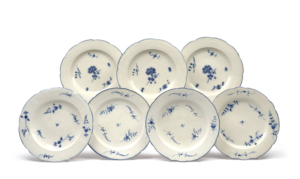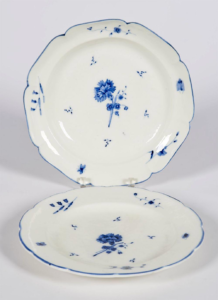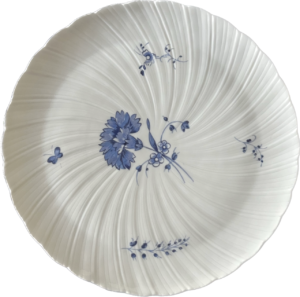Maison Rouard and French Decorative Arts in the Early 20th Century
From the end of the 19th century onwards, ceramic and glass craftsmen regained the organisation and visibility they had lost in 1791 (with the promulgation of the Le Chapelier law), but it was above all at the turn of the century and in the decades that followed that those involved in this profession found the means to organise themselves better and acquired the right to exhibit their work in exhibitions devoted to the fine arts.
One figure, but not the only one, contributed to this new boom: his name was Georges Rouard (1874-1929). Born in Chartres to a family of farmers, he graduated from the Ecole des Hautes Etudes Commerciales (HEC) in 1895 and immediately went into business.
In 1900, at the age of 26, he took over the management of the Maison de Céramique “A la Paix” at 34, avenue de l’Opéra, in Paris and in 1914, before being mobilised, he created the group of Contemporary French Craftsmen who exhibited their works once a year in the Rouard Gallery (name used from the 1920s onwards). This gallery survived the death of its founder and remained open until 1966. In 1954, Rouard became one of the first 15 members of the famous Colbert Committee, created on the initiative of Jean-Jacques Guerlain.
This house of modern art brought together artist-decorators, glassmakers, art lovers and collectors around a love of objets d’art and the arts of the table. This creative hub was to witness a number of collaborations and career launches, such as that of René Lalique, who exhibited his works there before opening his own boutique on Place Vendôme.
Among the products offered to its customers of refined taste were porcelain services designed by the artists of the Rouard House and executed by porcelain houses such as Haviland and Bernardaud, among others.
On the occasion of his nomination to the Légion d’Honneur in 1923, Georges Rouard pronounced these words which we find revealing of his aesthetic and the principles which guided his work, as well as of a vision of the decorative arts at the time of the famous 1925 exhibition:
"On the eve of the 1925 International Exhibition of Modern Decorative and Industrial Arts, it is our duty not to launch ourselves blindly into the unknown and to try to get a clear sense of the goal we are trying to achieve. All the glorious past styles of our France, from which we draw inspiration for our work, retain an economic function which it would be foolish to deny, but we must have the courage not to stop there... Our organisation, our temperament, our taste, prevent us from producing huge quantities at very low prices. Let us focus our efforts on the original, well-made object with a personal character. (...) Let us know how to surround ourselves with specialised artistic advice, let us produce fewer models, but let each one show a new research, a form perfectly adapted to its use, a decoration really created for this form. Let us not get bogged down in old traditions, in the routine of the trade. This will require an effort from each of us, risks, setbacks, moments of discouragement, but what a reward..."
Rouard participated in the creation of new models at the same time as it reissued historical creations (Rouen, Nevers, Marseille, Sèvres, Chantilly…).
A fine example of a historical service reproduced by Rouard is one that uses the “à la brindille”— or “sprig”—motif of 18th century Chantilly porcelain all the while employing a resolutely modern form, with a movement that unfolds from top to bottom. The contours and surfaces are not the same, but the pattern is certainly a reproduction of the 18th-century model.
Two variations of the “sprig” pattern existed in the 18th century as you can see here:

Here you can see an example of the 18th-century model chosen by Rouard together with a dessert plate from their 20th-century version:
It is interesting to note that Bernardaud reproduced the second variation—separately from its collaboration with Rouard. This model is still quite easy to find today, in contrast to the services signed by both Rouard and Bernardaud. That is why we decided to offer such a set in our online shop, where we offer a tea set for six as well as sets that include pairs of tea cups, saucers and dessert plates.



